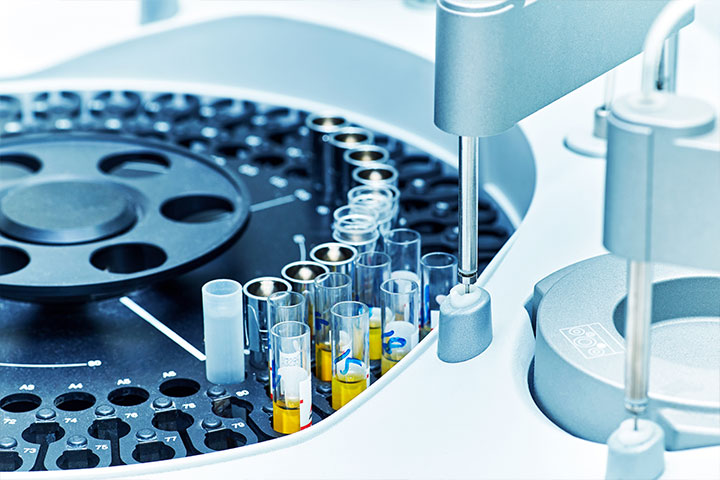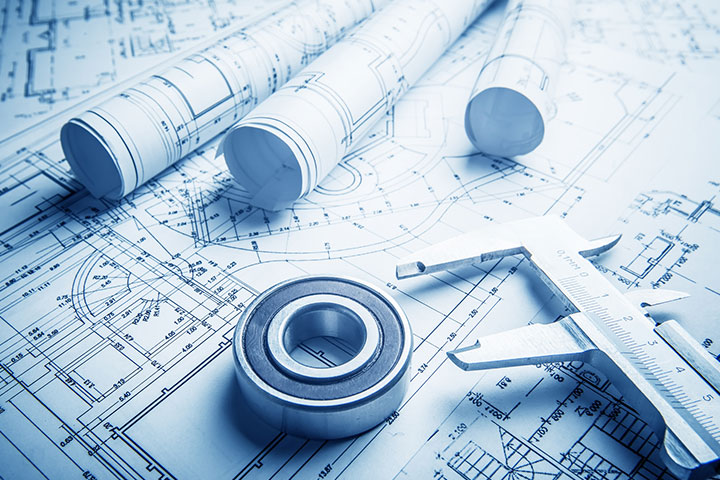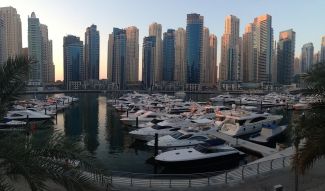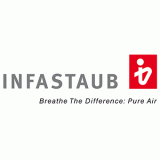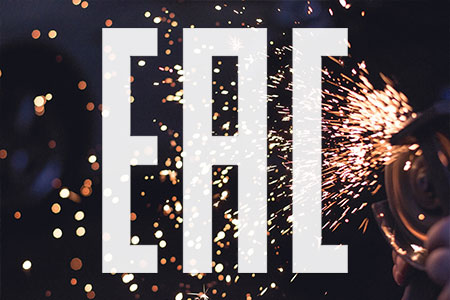
The Equipment and components that shall be certified according to the Technical Regulation TR CU 012/2011 “On safety of the equipment for operation in explosive atmospheres” have to be marked appropriately. This includes the explosion protection marking as well as the identification number, which indicates the explosion protection of the machine and its components.
The marking shall be conducted according to the GOST standards. Electrical equipment has to be marked according to GOST 31610.0-2014 “Explosive atmospheres. Part 0. Equipment. General requirements” and GOST 60079. GOST standards are harmonised with IEC 60079-0:2001.
Ex Label

In addition to the EAC conformity Mark, the Ex label has to be attached on the equipment.
The EAC EX label consists of the combination of to conventionalized letters “E” and “X”, while “Ex” stands for explosion protection. The height of letter “x” has to be equal to 5/9 of letter´s “E” height. The letters shall be attached on a white or contrasting background.
The height of the Ex symbol must be at least 10 mm with height-to-width aspect ratio 11/8, so that it is clearly legible with an unaided eye.
The Explosion Safety Mark shall be affixed on every machine, ex-components or technical documentations.
Markings on the type label
The marking on explosion protected equipment shall include the following components:
- Explosion-proof marking
- Name of the manufacturer
- Name of the notified body
- Number of the notified body
- EAC Conformity Mark
- Number of the certificate of conformity
- Equipment category and group
- Level of protection
- Type of ignition protection
- Equipment group
- Sub-division of equipment group
- temperature class
- IP protection
Equipment category
The first number on the Ex Label indicates the equipment category.
0 – Equipment with "very high" level of protection for use in explosive gas atmospheres, in which ignition danger is not likely to expect in normal operation.
1 – Equipment with "high" level of protection for use in explosive gas atmospheres, that is unlikely to become an ignition source in normal operation or during expected malfunctions
2 – Equipment with "enhanced" level of protection for usage in explosive gas atmospheres, that is unlikely to become an ignition source and provides additional protection in order to prevent danger of ignition in case of expected malfunctions.
Equipment intended for use in mines susceptible to firedamp belong to group I and shall be certified according to GOST 12.2.020-76.
PO – Equipment with very high level of protection for usage in explosive gas atmospheres
PB – Explosion protected electrical equipment
PП – Equipment with enhanced level of protection
Type of ignition protection
| Type of gas ignition protection | GOST norm | |
|---|---|---|
| "d" | Flameproof enclosures | GOST R 51330.1-99 |
| "e" | Increased safety | GOST R 51330.8-99 |
| "i" ("ia", "ib", "ic") | Intrinsic safety | GOST R 51330.10-99 |
| "m" ("ma", "mb") | Encapsulation | GOST R 51330.17-99 |
| "nA" | Non-sparking equipment | GOST R 51330.17-99 |
| "nC" | Hermetically sealed facilities | GOST R 51330.17-99 |
| "nR" | Gas-proof housings | GOST R 51330.17-99 |
| "o" | Oil immersion | GOST R 51330.7-99 |
| "p" ("px", "py", "pz") | Pressurized enclosures | GOST R 51330.3-99 |
| "q" | Powder filling | GOST R 51330.6-99 |
| "s" | Special protection | GOST R 51330.17-99 |
| Type of ignition protection for non electrical equipment | ||
| "t" ("tа", "tb", "tc") | Protection by enclosure | |
| "i" ("ia", "ib", "ic") | Intrinsic safety | GOST R 51330.10-99 |
| "m" ("ma", "mb") | Encapsulation | GOST R 51330.17-99 |
| "p" | Pressurized enclosures | GOST R 51330.3-99 |
| "s" | Special protection | GOST R 51330.17-99 |
| Type of dust ignition protection | ||
| "c" | Constructional safety | |
| "b" | Control of ignition source | |
| "k" | Protection of liquid immersion | |
| "d" | Flameproof enclosures | |
| "p" | Pressurized enclosures | |
| "s" | Special protection |
Equipment group
Group I - Equipment intended for use in underground mining works and surface mining works
Group II - Equipment intended for use in remaining areas - apart from mining - that may be exposed to an explosive atmosphere
Group III - Equipment intended for dust explosion hazardous areas, apart from mining
Subdivision of the equipment groups
The danger increases from explosion sub-group IIA to IIC.
I: Methane and coal dust
II A: Propane
II B: Ethylene
II C: Hydrogen
IIIA: Combustible flyings
IIIB: Non-conductive dusts
IIIC: Conductive dusts
Level of protection
Gas explosion protection and dust explosion protection
G – for gas
D – for conductive dusts
Ga and Da – Equipment with very high level of protection for use in explosion hazardous areas, that is unlikely to become an ignition source in normal operation or during expected malfunctions.
Gb and Db – Equipment with high level of protection for use in explosion hazardous areas, that is unlikely to become an ignition source in normal operation or during expected malfunctions.
Gc and Dc – Equipment with enhanced level of protection for use in explosion hazardous areas, that is unlikely to become an ignition source and provides additional protection in order to prevent danger of ignition in case of expected malfunctions.
Equipment for mines:
Ma - very high level of protection: Equipment in explosion hazardous areas remains in operation
Mb – high level of protection: Equipment is switched off in explosion hazardous areas
Temperature class
The ignition temperature of an explosion hazardous gas atmosphere denotes the lowest temperature of a heated surface, at which an ignition of combustible materials, such as gas or steam can occur.
| Ignition temperature in °C | Temperature class |
|---|---|
| >450 | T1 |
| >300 to 450 | T2 |
| >200 to 300 | T3 |
| >135 to 200 | T4 |
| >100 to 135 | T5 |
| >85 to 100 | T6 |
IP Protection
The IP Coding is standardized by GOST 14254-96 (IEC 529-89) “Degrees of protection provided by enclosures.
The IP protection types define the level of protection of the housing against contact, foreign bodies and water. The marking consists in the letters “IP”, two numbers and eventually two additional letters. The first number is between 0 and 6 and determines the protection against foreign bodies; the second one is between 0 and 8 and determines the protection against water. If one of these numbers shall not be indicated it has to be replaced by an “X”. If necessary, the numerical combination may be completed by letters, which describe the type of protection in more detail.
Examples: IPXX IPX5 IPX2 IP20C IPXXC IPX1C IP3XD IP23S IP21CM
Schmidt & Schmidt supports you in the certification of ATEX equipment according to the technical regulations 012/2011 for Russia and the Eurasian Economic Union. We also offer to prepare the required technical documentations with translations into Russian.




